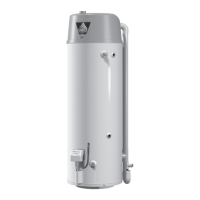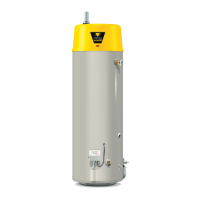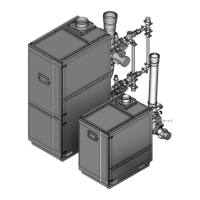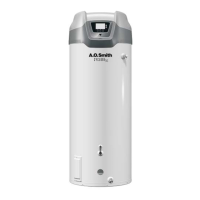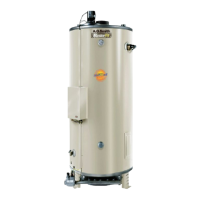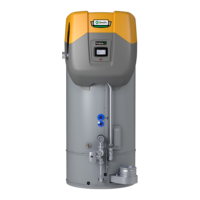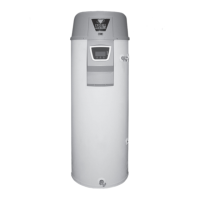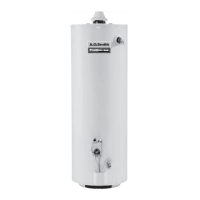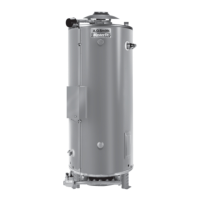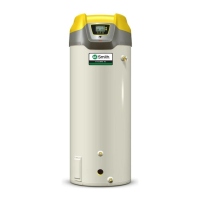10
LOCATING THE WATER HEATER
Carefully choose a location for the new water heater. The
placement is a very important consideration for the safety of the
occupants in the building and for the most economical use of the
appliance.
Property Damage Hazard
All water heaters eventually leak.
•
Do not install without adequate drainage.
•
Whether replacing an existing water heater or installing the
water heater in a new location observe the following critical
points:
1. The water heater must be located indoors.
2. The water heater must not be located in an area where it
will be subject to freezing temperatures.
3. Locate the water heater so it is protected and not subject
to physical damage by a moving vehicle.
4. Locate the water heater on a level surface.
5. Locate the water heater near a floor drain. The water
heater should be located in an area where leakage of
the tank or connections will not result in damage to the
area adjacent to the water heater or to lower floors of the
structure. When such locations cannot be avoided, it is
recommended that a metal drain pan, piped to adequate
drain, be installed under the appliance. Drain pan should
be fabricated with sides at least 2” deep with diameter
at least 2” greater than diameter of heater. Pan must not
restrict combustion flow.
6. Locate the water heater close to the point of major hot
water usage.
7. Locate the water heater close to a 120 VAC power supply.
See Power Supply on page 14 for requirements.
8. Locate the water heater where an adequate supply of fresh
air for combustion and ventilation can be obtained. See
Combustion Air and Ventilation on page 11.
9. Locate the water heater where the vent and intake air
piping, when installed, will remain within the maximum
equivalent lengths allowed. See Venting on page 20.
10. Do not locate the water heater where noise (such as
the Combustion Blower) during normal operation will be
objectionable in adjacent areas.
11. Do not locate the water heater where the subsequent
installation of the vent (exhaust) or intake air terminations
would be objectionable due to noise at the termination(s).
This includes locations close to or across from windows
and doors. See Venting starting on page 20.
DO NOT LOCATE WATER HEATER IN AREAS WHERE
FLAMMABLE LIQUIDS (VAPORS) ARE LIKELY TO BE
PRESENT OR STORED (GAR AG ES, STOR AGE A ND UTILIT Y
AREAS, ETC.): Flammable liquids (such as gasoline, solvents,
propane (LP or butane, etc.) and other substances (such as
adhesives, etc.) emit flammable vapors which can be ignited
by a gas water heater’s hot surface igniter or main burner. The
resulting flashback and fire can cause death or serious burns
to anyone in the area.
Also, the water heater must be located and/or protected so it
is not subject to physical damage by a moving vehicle.
This water heater must not be installed directly on carpeting.
Carpeting must be protected by metal or wood panel beneath the
water heater extending beyond the full width and depth of the water
heater by at least 3” (7.6 cm) in any direction, or if the appliance is
